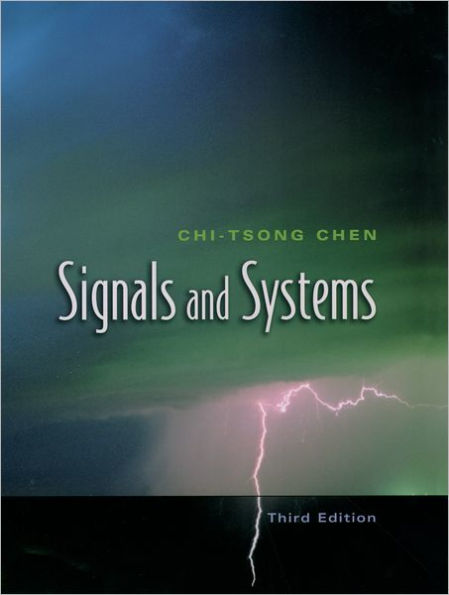Table of Contents
Preface
Each chapter ends with Problems.
1. Signals
1.1. Introduction
1.2. Continuous-Time (CT), Discrete-Time (DT), and Digital Signals
1.3. Elementary CT Signals
1.4. Manipulations of CT Signals
1.5. Impulse
1.6. Elementary DT Signals and Their Manipulations
1.7. CT Sinusoidal Signals
1.8. DT Sinusoidal Sequences and Nyquist Frequency Range
1.9. Sampling and Frequency Aliasing
2. Systems
2.1. Introduction
2.2. CT Systems with and without Memory
2.3. The Concept of State-Set of Initial Conditions
2.4. Linearity of Memory-less Systems
2.5. Time Invariance and its Implication
2.6. Implications of Linearity and Time Invariance-Zero-State Responses
2.7. Modeling CT LTI Lumped Systems
2.8. Ideal Operational Amplifiers
2.9. Ideal Diodes and Rectifiers
2.10. LTI Discrete-Time Systems
2.11. Conclusion
3. Convolutions, Difference and Differential Equations
3.1. Introduction
3.2. DT Impulse Responses
3.3. DT LTI Systems: Discrete Convolutions
3.4. DT LTIL Systems: Difference Equations
3.6. General Form of Difference Equations
3.7. CT LTI Systems: Integral Convolutions
3.8. CT LTIL Systems: Differential equations
4. Frequency Spectra of CT Signals
4.1. Introduction
4.2. Fourier Series of Periodic Signals: Frequency Components
4.3. Fourier Transform: Frequency Spectra
4.4. Properties of Frequency Spectra
4.5. Frequency Spectra of CT Periodic Signals
4.6. Effects of Truncation
4.7. Time-Limited Bandlimited Theorem
5. Sampling Theorem and FFT Spectral Computation
5.1. Introduction
5.2. Frequency Spectra of DT Signals
5.3. Nyquist Sampling Theorem
5.4. Computing frequency spectra of DT signals
5.5. FFT Spectral Computation of DT Signals
5.6. FFT Spectral Computation of CT Signals
6. CT Transfer Functions: Laplace Transform
6.1. Introduction
6.2. Laplace Transform
6.3. Transfer Functions
6.4. Properties of Laplace Transform
6.5. Inverse Laplace Transform
6.6. Significance of Poles and Zeros
6.7. Stability
6.8. Frequency Responses
6.9. From Laplace Transform to Fourier Transform
6.10. Frequency Responses and Frequency Spectra
6.11. Concluding Remarks
7. Realization, Characterization, and Identification
7.1. Introduction
7.2. Realizations
7.3. Basic Block Diagrams
7.4. Computer Computation of State-Space Equations
7.5. Developing State-Space Equations
7.6. Complete Characterization by Transfer Functions
7.7. Identification by Measuring Frequency Responses
8. Model Reduction, Feedback, and Modulation
8.1. Introduction
8.2. Op-Amp Circuits Using Single-Pole Model
8.3. Seismometers and Accelerometers
8.4. Composite Systems
8.5. Sinusoidal Generators
8.6. Feedback Model of Op-Amp Circuits
8.7. Modulation
8.8. AM Modulation and Asynchronous Demodulation
9. DT Transfer Functions: z-Transform
9.1. Introduction
9.2. z-transform
9.3. DT Transfer Functions
9.4. Properties of z-Transform
9.5. Inverse z-Transform
9.6. Significance of Poles and Zeros
9.7. Stability
9.8. Frequency Responses
9.9. Frequency Responses and Frequency Spectra
9.10. Digital Processing of CT Signals
10. DT State-Space Equations and Realizations
10.1. Introduction
10.2. From Difference Equations to Basic Block Diagrams
10.3. Realizations
10.4. MATLAB® Computation
10.5. Complete Characterization by Transfer Functions
References
Answers to Selected Problems
Index




